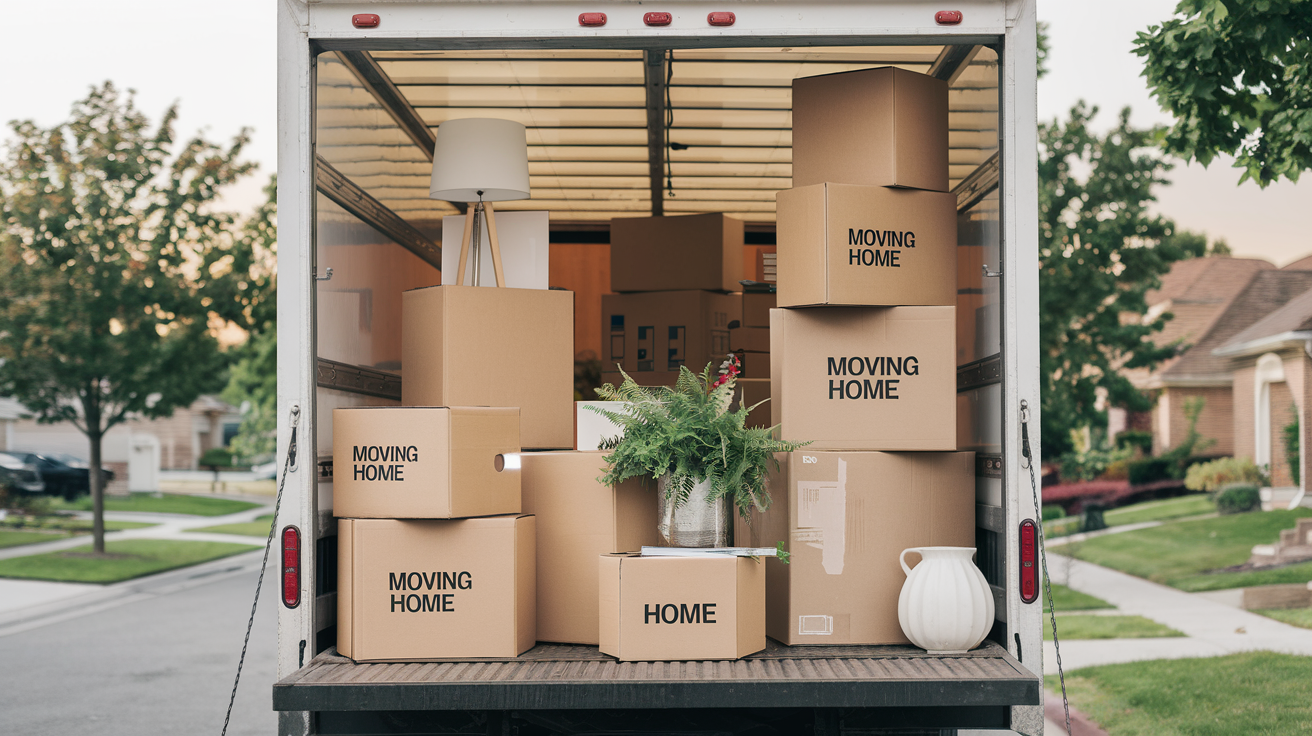Moving Home: Your Guide to a Smooth Move
Moving to a new home can be one of the most exciting yet stressful experiences. Whether you’re moving across town or to a different state, the process can feel overwhelming. But don’t worry! With the proper preparation and organization, you can make your move smooth, stress-free, and enjoyable.
We’ll walk you through everything you need about moving home—from planning and packing to settling into your new space.
Step 1 – Planning Your Move Ahead of Time
Create a Moving Timeline
Planning is one of the best ways to ensure a smooth move. Start by creating a moving timeline that outlines every step, from beginning to end. If possible, start planning your move at least eight weeks in advance. This will give you ample time to tackle tasks bit by bit, making the process much more manageable.
Here’s a sample moving timeline to help you get started:
| Time Before Move | Task |
|---|---|
| 8 weeks | Begin decluttering your home. |
| 6 weeks | Research and hire a moving company. |
| 4 weeks | Start packing non-essential items. |
| 2 weeks | Pack essential items and finalize details. |
| Moving day | Transport items and set up essentials. |
Budget for Your Move
Moving can be expensive, so budgeting ahead of time is crucial to avoid any financial surprises. Start by estimating all the costs involved:
- Moving Company Fees: Get quotes from at least three moving companies.
- Packing Supplies: Boxes, tape, bubble wrap, and markers.
- Insurance: Protect your belongings during transit.
- Hidden Costs: Don’t forget fuel, utility transfer fees, and cleaning expenses.
Pro Tip: Hiring professional movers is convenient but may not always be necessary. If you’re on a tight budget, consider renting a moving truck and doing it yourself. However, be realistic about the amount of heavy lifting you can do!
Step 2 – Decluttering Before You Pack
Moving presents the perfect opportunity to declutter. There’s no point in taking items to your new home you no longer use or need.
Sort Through Your Belongings
A good rule of thumb is to go room by room and sort your belongings into categories: Keep, Donate, Sell, and Throw Away. This will help you start fresh in your new space without unnecessary clutter.
Fact: According to a study by the National Association of Productivity & Organizing Professionals, decluttering can reduce stress and increase productivity by up to 40%.
Donate, Sell, or Toss
Once you’ve sorted your items, you need to decide what to do with them:
- Donate: Good-condition clothing, furniture, and household items can be donated to charities like Goodwill.
- Sell: Consider selling valuable items online through platforms like eBay and Facebook Marketplace or by holding a garage sale.
- Throw Away: Anything broken or no longer valid can be discarded.
By decluttering now, you’ll save time and money when packing and moving.
Step 3 – Packing Smart
Packing is one of the most time-consuming moving parts, but it mustn’t be stressful. Here’s how you can pack like a pro.
Gather the Right Packing Supplies
Having the right supplies on hand will make packing more accessible and more organized. Here’s what you’ll need:
- Sturdy boxes of different sizes
- Bubble wrap for fragile items
- Packing tape and scissors
- Labels or markers for color-coding boxes
- Protective covers for furniture and electronics
Pro Tip: Color-code boxes with labels or markers based on the room. For example, use red for the kitchen, blue for the bedroom, and green for the bathroom.
Start with Non-Essential Items
First, pack items you won’t need immediately, such as seasonal clothes, decor, and books. Save the essentials for last. You use these things daily, like toiletries, dishes, and essential documents.
Case Study: Darcy and Elizabeth, a couple moving from Chicago to New York, began packing their non-essential items six weeks in advance. By moving day, they had only their daily essentials left to pack, making the process much smoother and faster.
Protect Fragile Items
Fragile items need extra care. Use bubble wrap, packing paper, or even towels to keep breakables like glassware and dishes safe. Stack dishes vertically rather than laying them flat to avoid breakage. Wrap electronics in blankets or bubble wrap for added protection.
Checklist:
- Wrap each fragile item individually.
- Use dish packs for kitchenware.
- Mark boxes with fragile items.
Step 4 – Hiring Professional Movers or DIY?
One of the most significant decisions when moving home is hiring a professional moving company or handling the move yourself.
Research Moving Companies
If you decide to hire movers, it’s essential to research your options. Look for companies with positive reviews and ask for recommendations from friends or family. Ensure the company is insured and offers damage coverage if anything goes wrong.
Questions to ask a moving company:
- Do you have experience with long-distance moves?
- Are there any hidden fees?
- What is your insurance policy for lost or damaged items?
Pro Tip: Avoid moving companies with prices that seem too good to be true—they often are.
Moving Yourself?
If you’re planning to move without professional help, consider the following:
- Renting a Truck: You can rent a moving truck from companies like U-Haul or Budget Truck Rental. Make sure to choose a truck size that fits your belongings.
- Enlist Help: Don’t be shy about asking friends or family for help. Offer them food or drinks as a thank-you for their time and effort.
Case Study: Elizabeth decided to rent a truck for her local move. She saved money by enlisting her friends to help load and unload her furniture. The move went smoothly, thanks to an organized plan and plenty of pizza for her friends.
Step 5 – Moving Day Essentials
The day of the move can be chaotic, so it’s essential to have a strategy in place. Here are some critical tips to make the process smoother.
Prepare an Essentials Box
Before you move, pack a box or bag of essentials you’ll need on moving day and the first night in your new home. Include:
- Toiletries (toothbrush, toothpaste, soap)
- Snacks and water
- Phone chargers and electronics
- Change of clothes
- Essential documents (lease, insurance papers, etc.)
Pro Tip: Keep this essential box with you during the move so you can access it easily when you arrive.
Keep Your Valuables Safe
If you’re moving expensive or irreplaceable items like jewellery, electronics, or important documents, consider transporting them yourself in your vehicle rather than packing them with the movers. This ensures that they are safe and secure.
Checklist for moving valuables:
- Pack jewellery in a padded box.
- Wrap electronics securely with protective material.
- Keep all necessary documents (birth certificates, passports) in a folder.
Step 6 – Settling Into Your New Home
Once you’ve arrived at your new home, the next step is to unpack and settle in. This can feel as overwhelming as packing, but you can make the process smooth and enjoyable with a few tips.
Unpacking Systematically
Rather than trying to unpack everything at once, focus on the most critical rooms first:
- Bedrooms: Set up your bed and unpack necessities like clothes.
- Kitchen: Unpack dishes, cookware, and utensils to make meals easier.
- Bathroom: Ensure you have towels, toiletries, and toilet paper handy.
Once the essentials are done, you can unpack quickly over the following days.
Fact: According to moving experts, setting up the bedroom first is crucial because a good night’s sleep will help you feel more rested and ready to tackle the rest of the unpacking.
Change Your Address and Utilities
One important but often overlooked task is changing your address and transferring utilities. You don’t want to move into your new home only to find you don’t have electricity or internet!
Here’s a checklist of services to notify:
- Utility Companies (Electricity, Gas, Water)
- Postal Service (Change of Address Form)
- Internet and Cable Providers
- Banks (Update billing address)
- DMV (Driver’s license and vehicle registration)
Make these changes at least two weeks before moving day to ensure everything is set up when you arrive.
Step 7 – Dealing with Moving Stress
Moving is stressful, but there are ways to stay calm and organized.
Take Breaks and Stay Organized
It’s easy to get overwhelmed, especially if things aren’t going as planned. That’s why taking breaks, hydrating, and recharging when needed is essential. Staying organized with checklists and a timeline will also help reduce stress. Remember, it’s okay to ask for help when you need it.
Quote: “Moving can be exhausting, but staying organized and maintaining a positive attitude makes the process manageable.” – Professional Moving Expert, John Miller
Read More: Stress-Free Moving in Manchester: A Comprehensive Guide
Celebrate Your New Space!
After moving hard, take time to enjoy your new home. Celebrate with a housewarming party, or simply treat yourself to a relaxing evening. You’ve earned it!
Conclusion
Moving home doesn’t have to be stressful or overwhelming. With proper planning, organization, and a positive mindset, you can make the process smooth and even enjoyable. Every step in preparation makes your move more accessible, from creating a timeline and decluttering to packing bright and settling in. Embrace the change and make your new house a home!

Muhammad Zafar Sharif is an accomplished Electrical Engineer who has successfully transitioned into the digital realm. With a strong technical background, he has cultivated expertise in two key areas of modern technology: App Development and Search Engine Optimization (SEO). Leveraging his analytical skills and problem-solving abilities honed through his engineering education, Muhammad excels in optimizing digital content for search engines. His comprehensive understanding of SEO principles allows him to enhance website visibility and improve online presence for businesses across various industries.






